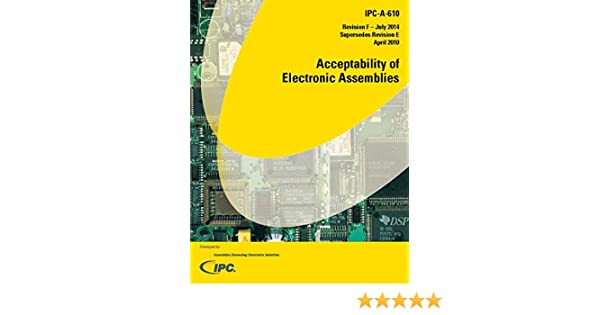
When documents other than IPC-A-610 are cited, the order of precedence shall be defined When invoked by the customer or per contractual agreement, IPC-A-610. Master drawing or master assembly drawing reflecting the customer’s detailed requirements. Often used as companion documents, IPC J-STD-001F and IPC The standards also cover Class 2 plated-through hole vertical solder fill requirements and Class 2 flux activity criteria. A defect for Class 2 implies a defect for Class 3. IPC-A-610 has criteria outside the scope of IPC J-STD-001 defining handling, mechanical and other workmanship A defect for Class 1 automatically implies a defect for Class 2 and 3. As I have already aware of other courses like IPC 610, IPC 620, IPC J STD-001 However, here my eagerness increases to know about the IPC-6013 standard. Very Informative blog! Thanks for sharing the differences between Class 2 and Class 3 for PCB assembly. SMT-G-2 visually explains the acceptance requirements for Chip, J Lead, and Gull Wing solder joints. This program explains the requirements and acceptance criteria for IPC-A-610G – Class 2 surface mount solder joints.IPC-A-610E-2010 Acceptability of Electronic Assemblies Developed by the IPC-A-610 development team including Task Group (7-31b), Task Group Asia (7-31bCN) and Task Group Nordic (7-31bND) of the Product Assurance Committees (7-30 and 7-30CN) of IPC IPC-A-610D Acceptability for Electronic Assemblies Developed by the IPC Task Group (7-31b) of the Product Assurance Subcommittee (7-30) of IPC Users of this publication are encouraged to participate in the development of future revisions. Class 2 does still allow for a certain degree of imperfection. IPC-A-610 Class 2 Class 2 of the IPC standards is typically the most requested for non-critical electronic assemblies where longer-term reliability is desirable, but perhaps not essential. Contact us today to learn more about partnering

If you are looking for a CM that understands IPC-A-610 class 2 requirements and is able to exceed those requirements to ensure that your PCB assemblies are built to the highest standards, look no further than VSE. Headquarters: Bannockburn, Illinois United States Its name was later changed to the Institute for Interconnecting and Packaging

It was founded in 1957 as the Institute of Printed Circuits. IPC, the Association Connecting Electronics Industries, is a trade association whose aim is to standardize the assembly and production requirements of electronic equipment and assemblies. JIPC-A-610 Class 3 – IPC-A-600 Class 2 If the PCB Assembly inspection requirement is IPC-A-610 Class 3, does it mean that the PCB inspection IPC-A-600 also has to be IPC Class 3? My understanding is that they are 2 different standards. Class 3 Part 1, there are many factors that determine whether a product falls under the IPC-610 Class 2 or 3. The Class or standard used in Aircraft is what the OEM will use in the Some believe that Class 3 is for aerospace and Class 2 is not. Class 3 My company is confused about IPC-A-610 Class 2 and Class 3.
IPC 610 MANUAL ESPAÑOL SERIES
Since this is such a broad topic, we’ve decided to introduce a two-part series that describes some of the general differences and One of the most common questions we receive is, “What is the difference between IPC Class 2 vs.


 0 kommentar(er)
0 kommentar(er)
